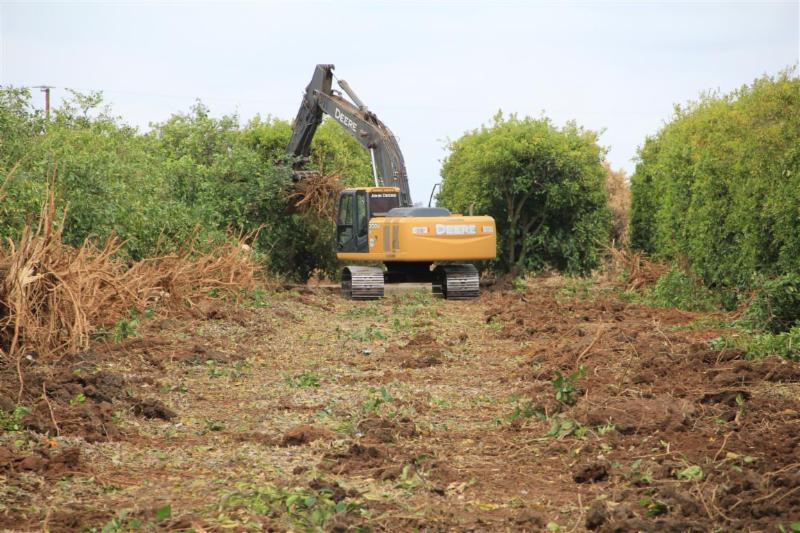Legislation Update
The National Pork Producers Council reported today:
HOUSE POSTPONES ACTION ON AGRICULTURAL APPROPRIATIONS BILL
The House this week began considering the fiscal 2015 funding bill for Agriculture, Rural Development, Food and Drug Administration, and Related Agencies, but postponed a final vote on it so that Republicans can sort out their leadership issues in the wake of Majority Leader Eric Cantor’s decision to step down from his post after losing his primary election for the Virginia 7th Congressional District seat. The legislation includes $20.9 billion in discretionary money, which is equal to the fiscal 2014 level, and $121.3 billion for mandatory spending for federal food programs. NPPC helped secure in the House Appropriations Committee-approved bill language that prohibits USDA from implementing certain burdensome provisions included in the 2008 Farm Bill related to the buying and selling of livestock under the Grain Inspection and Packers and Stockyards Act. Additionally, Rep. Tom Latham, R-Iowa, requested and was able to include funding for research on porcine endemic diarrhea virus (PEDv) funding to better understand the transmission of the disease. NPPC is thankful of Rep. Latham and Appropriations Committee Chairman Robert Aderholt, R-Ala., for the inclusion of these important funds.
LIVESTOCK HAULERS RECEIVE ONE-YEAR EXEMPTION FROM DOT ‘HOURS OF SERVICE’ RULE
The U.S. Department of Transportation last Friday granted truck drivers hauling livestock and poultry a one-year exemption from an hours-of-service rule that took effect last July 1. The regulation requires truck drivers to take a 30-minute rest break after eight hours of service. For drivers transporting livestock and poultry, the hours of service included loading and unloading animals. NPPC hailed the move as a victory for animal welfare, as summer temperatures can cause livestock health problems, particularly for pigs, which do not sweat. NPPC is also appreciative of Secretary of Transportation Anthony Foxx for recognizing the importance of the issue for livestock farmers and Agriculture Secretary Tom Vilsack for his efforts to secure the exemption. Click here to read the rule.
HOUSE COMMITTEE HOLDS HEARING AFTER COMMENT EXTENSION GRANTED
NPPC Chief Environmental Counsel Michael Formica drafted a petition signed by 72 other agricultural groups in support of an extension. Under EPA’s proposal, the agency would redefine the term “waters of the United States” to include intermittent and ephemeral streams, and expand jurisdiction into farm fields and farm drainage. This would significantly impact agricultural operations, requiring permits and giving activists and regulators authority to dictate farm production practices. Prior to issuing these extensions, NPPC hosted EPA representatives at the World Pork Expo to meet with the NPPC Board of Directors and learn firsthand about farming. EPA visited farms in North Central Iowa to better understand farmers’ concerns regarding the apparent impact of these proposals and the need to work together with farmers to clarify EPA’s intent and minimize the unintended impacts on farmers and ranchers who have worked their families land for generations.
SMALL BUSINESS EXPENSING LEGISLATION APPROVED
The House Thursday approved on a 277-144 vote H.R. 4457, the “America’s Small Business Tax Relief Act of 2014,” which would permanently extend the tax code’s small business expensing provision – Section 179 – at a level of $500,000. Since 2003, Congress increased the amount of investment that small businesses can expense from $25,000 to $500,000. Legislation expanding and/or extending the provision was enacted eight times, but the expensing limits were temporary, and, beginning in 2014, the amount reverted to $25,000. NPPC joined dozens of other agricultural and business organizations in urging House lawmakers to approve the tax legislation. In a June 9 letter to bill sponsors Reps. Pat Tiberi, R-Ohio, and Ron Kind, D-Wis., the groups said permanent extension of Section 179 would increase investment and jobs, reduce tax complexity and paperwork and alleviate uncertainty for business owners, farmers and ranchers.
SENATE AGRICULTURE COMMITTEE HOLDS HEARING ON CHILD NUTRITION PROGRAMS
The Senate Agriculture Committee Thursday held a hearing titled “A National Priority: The Importance of Child Nutrition Programs to our Nation’s Health, Much of the discussion focused on the military turning away recruits and discharging service members because of poor health (known as the “Too Fat to Fight” epidemic) as well as on how reduced school lunch programs help students perform better in school. Witnesses included U.S. Air Force (Ret.) General Richard Hawley; National Parent Teacher Association President Otha Thornton; Dr. Stephen R. Cook, associate professor at the University of Rochester Medical Center School of Medicine and Dentistry; and Francis Scott Key Middle School Principal Yolanda Stanislaus. Click here to read testimonies and watch the hearing. Congress is in the beginning stages of reauthorizing the national school lunch program, and NPPC continues to promote pork as a lean healthy protein that should continue to be included in school lunches.
HOUSE WAYS AND MEANS TRADE SUBCOMMITTEE HOLDS AGRICULTURE TRADE HEARING
The House Ways and Means Subcommittee on Trade Wednesday held a hearing titled “Advancing the U.S. Trade Agenda: Benefits of Expanding U.S. Agriculture Trade and Eliminating Barriers to U.S. Exports.” In his opening remarks, Chairman Devin Nunes, R-Calif., voiced his concern that Japan was not being held to the standards that the Trans-Pacific Partnership (TPP), a 12-nation free trade agreement (FTA) of Pacific Rim countries, set out to meet. “If any countries insist on retaining tariffs, then we must complete the negotiations without them and allow them to rejoin when they can commit to full tariff elimination,” said Chairman Nunes. Japan continues to demand certain products, including pork, be excluded from tariff elimination. In addition to being the largest value market for U.S. pork exports ($1.89 billion in 2013), Japan is the fourth largest market for the rest of U.S. agriculture, which shipped $12.1 billion of food and agricultural products to the island nation in 2013. A final TPP agreement that does not eliminate all tariffs and non-tariff barriers on U.S. pork products will negatively affect U.S. pork exports for the next 20 years, meaning billions of dollars less in U.S. pork sales and tens of thousands fewer U.S. jobs. For NPPC to support a final TPP agreement, Japan needs to eliminate all tariff and non-tariff barriers on U.S. pork and pork products NPPC expressed its concerns to the subcommittee in written testimony. To read testimonies from the hearing, click here.
DR. GAMBLE PARTICIPATES IN CODEX WORKING GROUP
Dr. Ray Gamble, president ex officio of the International Commission on Trichinellosis, traveled to Tokyo, Japan, May 28-30 to participate in meetings as part of the Codex Committee on Food Hygiene’s physical working group tasked with drafting a document on parasites in food. Dr. Gamble provided invaluable expertise to the US Delegation which was led by the United States Department of Agriculture’s Food Safety and Inspection Service (FSIS). Currently, some trade partners such as the European Union and South Africa impose unnecessary trichinae mitigation steps on the United States’ pork industry. According to Dr. Gamble’s studies, there is virtually no risk for trichinae in the United States. A Codex document that creates counterproductive international standards on parasites would be burdensome on the U.S. pork industry. NPPC looks forward to working with FSIS as this document develops.
NPB’S LARSEN TRAVELS TO FINLAND
Steve Larsen, National Pork Board’s Director of Pork Safety, traveled to Kirkkonummi, Finland, June 4-6 to participate in an informal scientific colloquium of researchers/university academics, industry and government officials to hear how countries use Hazard Analysis & Critical Control Points (HACCP) and their issues. The committee is planning to propose a new work item aimed at updating the Codex Alimentarius’s General Principles of Food Hygiene, more specifically its Annex on HACCP. The group of HAACP experts will draft a discussion paper on if there is a need to make revisions and will present their findings at the next CCFH meeting this November.





















